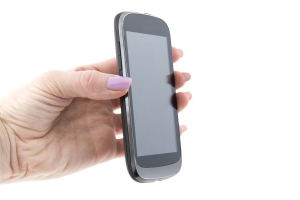 Social logins have become the norm and consumers not only look for a social login option on brand sites and mobile apps, they also expect a social login option.
Social logins have become the norm and consumers not only look for a social login option on brand sites and mobile apps, they also expect a social login option.
Gigya’s 2014 State of Consumer Privacy and Personalization study recently surveyed 2,000 people between the ages of 18 and 55 in the United States and the United Kingdom. The results showed that 77% of U.S. consumers and 60% of U.K. consumers have logged into a brand website or mobile account using a social network account.
This is a huge jump (45% increase) from 2012 when just 53% of U.S. consumers used social logins.
The rise of social logins is happening for three very specific reasons according to the Gigya report:
- Convenience: Fewer passwords to remember
- Ease: Particularly on mobile devices where filling out registration forms is difficult
- Relevance: By using a social login, consumers believe they get more personalized, relevant content and offers
In addition to convenience, ease, and relevance, consumers also believe that social logins offer greater transparency. The Gigya report explains:
Social login gives consumers the power to permit brands access to the data points housed within their social profiles needed to provide them with more relevant and timely user experiences, effectively striking a balance between two traditionally competing goals: privacy and personalization.
In other words, consumers feel like they have more control over their privacy and data sharing when they use a social login to access a brand site or application. With that said, it’s important to note that far more respondents to this survey used social logins because they’re convenient and easier than respondents who used social logins for greater transparency, relevance, and personalization.
Here’s the breakdown of why U.S. and U.K. consumers use social logins:
- I don’t want to spend time filling in registration forms = 53% U.S. and 60% U.K.
- I don’t want to create and remember another username and password = 47% U.S. and 46% U.K.
- I feel that my personal data is better protected when I use social login = 21% U.S. and 15% U.K.
- I want to share articles, products, or other content with my social network friends = 26% U.S. and 12% U.K.
- Other = 3% U.S. and 4% U.K.
What Should Brands Do?
First, it makes sense to provide an option for consumers to use social login on your website and in your mobile apps. Make sure that you clearly communicated how and why their information is used.
Furthermore, don’t ask for information beyond what you need to give the user what they’re looking for. The Gigya survey found that 84% of U.S. consumers and 81% of U.K. consumers have abandoned an online registration form because they weren’t happy with the amount or type of information that was requested. It’s nice to get extra information that you can use for targeting in the future, but you need to weigh the worth of that data with the possibility of not getting any data at all when users abandon your form. This is a time when split-testing will be extremely helpful in creating the highest performing forms possible.
Does your brand use social logins on its sites yet? Leave a comment and share your thoughts.
Image: Camilla Ahrensball
Susan Gunelius is the author of 10 marketing, social media, branding, copywriting, and technology books, and she is President & CEO of KeySplash Creative, Inc., a marketing communications company. She also owns Women on Business, an award-wining blog for business women. She is a featured columnist for Entrepreneur.com and Forbes.com, and her marketing-related articles have appeared on websites such as MSNBC.com, BusinessWeek.com, TodayShow.com, and more.
She has over 20 years of experience in the marketing field having spent the first decade of her career directing marketing programs for some of the largest companies in the world, including divisions of AT&T and HSBC. Today, her clients include large and small companies around the world and household brands like Citigroup, Cox Communications, Intuit, and more. Susan is frequently interviewed about marketing and branding by television, radio, print, and online media organizations, and she speaks about these topics at events around the world. You can connect with her on Twitter, Facebook, LinkedIn, or Google+.


